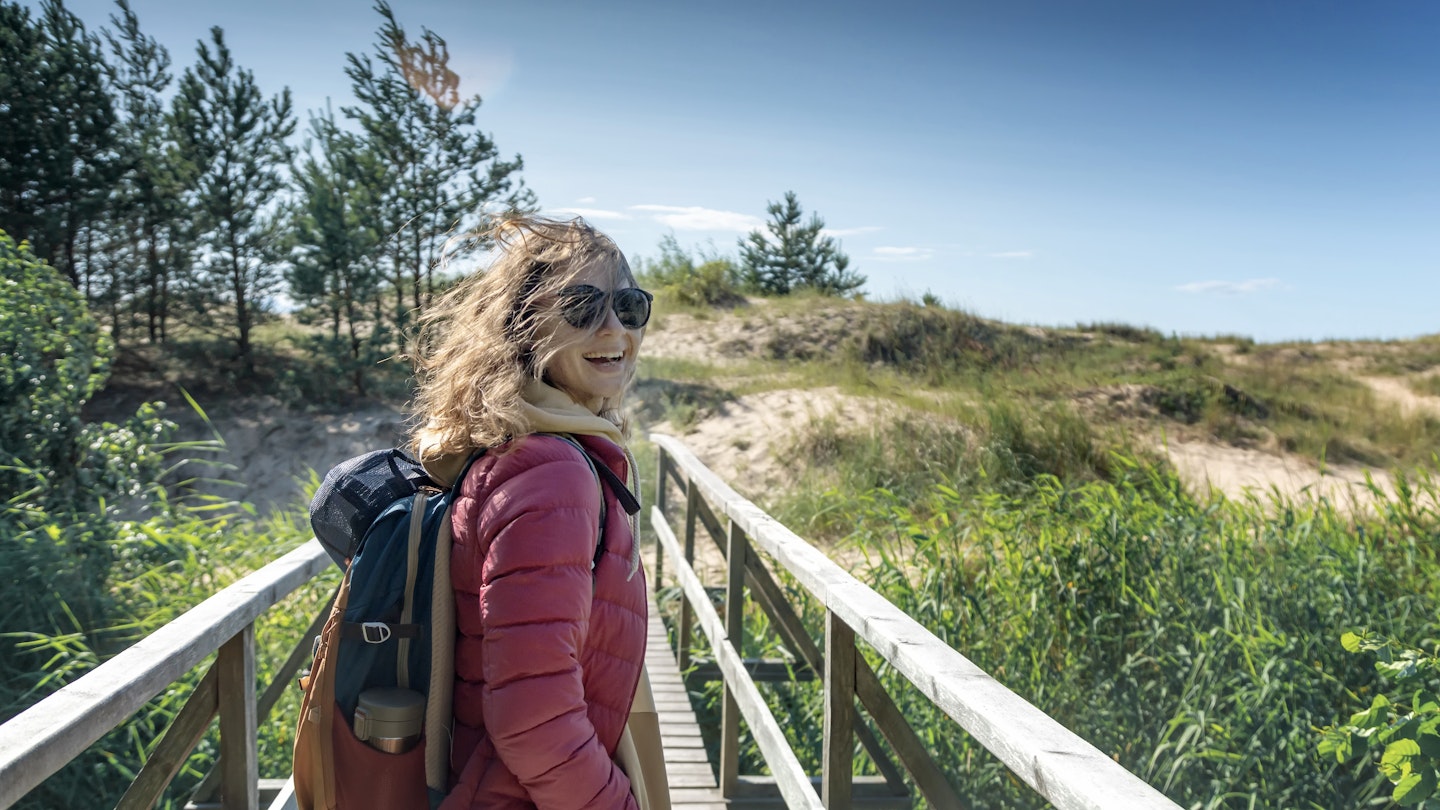Estonia, Latvia, and Lithuania might just be the next big hiking destinations. The Baltic states may lack mountain ranges, making them less enticing for those seeking summits. However, the region offers breathtaking forests, primeval bogs, and a rugged coastline bordered by the cold Baltic waters—all best explored at a leisurely pace.
The key challenge for athletic hikers in these parts is distance rather than elevation gain. The network of paths known as the Baltic Trails allows you to traversemultiple countries over several months, showcasing national parks, rural villages, and unexpected cultural heritage sites.
What are the Baltic Trails?
The Baltic Forest Route and the Baltic Coastal Route form the Baltic Trails—two long-distance hiking paths that span across Lithuania, Latvia, and Estonia.
Stretching 2,141 km (1,330 miles), the Forest Route begins in Lazdijai, Lithuania, on the Polish border and concludes in Tallinn, Estonia. Officially inaugurated in 2021, it challenges fit walkers to complete the distance in about 100 to 110 days. The Forest Trail also connects with the E11 European long-distance path, leading all the way to the Netherlands.
The Coastal Route measures 1,419 km (882 miles) and provides stunning views along the Baltic Sea, starting from Nida, Lithuania, and reaching Tallinn. This route can be completed within 70 to 72 days.
What to Expect on the Baltic Trails
Both Latvia and Estonia boast mixed forests covering more than half their land, with Lithuania having around a third. These forests are typical of Northern Europe and are rich in birch and pine trees. Moreover, wetlands are prevalent, especially along the coastline. Proper footwear is essential for traversing the spongy bogs of Estonia and Latvia, many of which date back to prehistoric times.
The Coastal Route starts at Curonian Spit, transitions through Ķemeri National Park, and continues to the resort town of Jūrmala before arriving in Riga. Bird-watchers will delight in the lesser-known Matsalu National Park in Estonia, which features various meadows and reed-clad marshes. A detour may take hikers to the islands of Vormsi and Hiiumaa before navigating the northern coast toward Tallinn.
The Forest Route guides adventurers through landscapes such as the misty Dubysa River Valley and Gauja National Park, Latvia’s largest. The Setomaa region in Estonia showcases the unique culture of the Seto minority, known for its ancient language and singing traditions. As you explore, you’ll encounter traces of a shared tumultuous history reflected in the architecture and customs, which blend Nordic, German, Russian, and Soviet influences.
Preparing for the Baltic Trails
Undertaking either of the Baltic Trails requires thorough preparation. Detailed maps of each trail section outline the terrain and available services. The Forest Route is marked with white-yellow-white signs, while the Coastal Route is identified by white-blue-white signs. It’s advisable to download GPX tracks for navigation, although caution is advised as power sources are limited along the routes.
The trails are designed to minimize the need for wild camping, connecting various villages, rural guesthouses, campgrounds, and public transport stops every 20–30 km (12.5–19 miles). Most rural guesthouses operate seasonally; therefore, it’s vital to check availability beforehand.
Summer offers the best weather with long days, but the unpredictable Baltic climate means rain and wind are common. As rural areas are sparsely populated, ensuring you carry sufficient supplies is crucial.
Much of the Baltic Trails consists of gravel and asphalt roads open to minimal traffic, including urban sidewalks. While the Coastal Route hugs the shoreline, the Forest Route does not continuously traverse forests but often cuts through open countryside.
If You Only Have a Few Days…
Considering their length, completing the Baltic Trails in one journey is ambitious. Most hikers will likely select a section that suits their available time. Starting from any point along either route and hiking in either direction is entirely feasible.
For short trips, choosing any of the many national parks or nature reserves along the way is an excellent option for a weekend getaway. Thanks to efficient public transport in the Baltic countries, it’s simple to select a route that concludes at a bus depot or train station.
Cycling the Baltic Trails
The majority of the Baltic Trails involve gravel, dirt, and asphalt roads, making cycling a popular alternative to hiking. The low-traffic routes along Lake Peipus and within Matsalu National Park cater to cyclists, and the absence of significant climbs makes it a pleasant experience. A mountain or gravel bike is recommended, but a standard road bike can also navigate several sections without difficulty.
Is Wild Camping Allowed in the Baltic Countries?
Under the “right to roam” principle, Estonia, Latvia, and Lithuania permit wild camping. However, it is crucial to avoid private lands—common throughout the countryside unless explicitly marked. Camping on private property is prohibited without the owner’s permission.
Interestingly, Estonia has the highest number of bears among these countries, with over 900 reported, while Latvia and Lithuania have significantly fewer.





